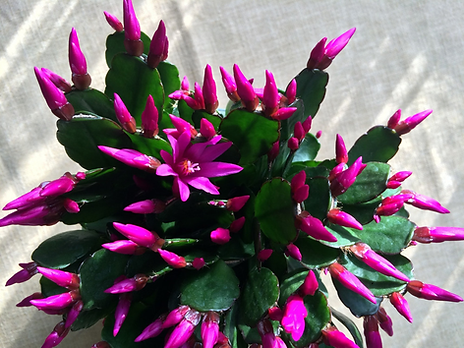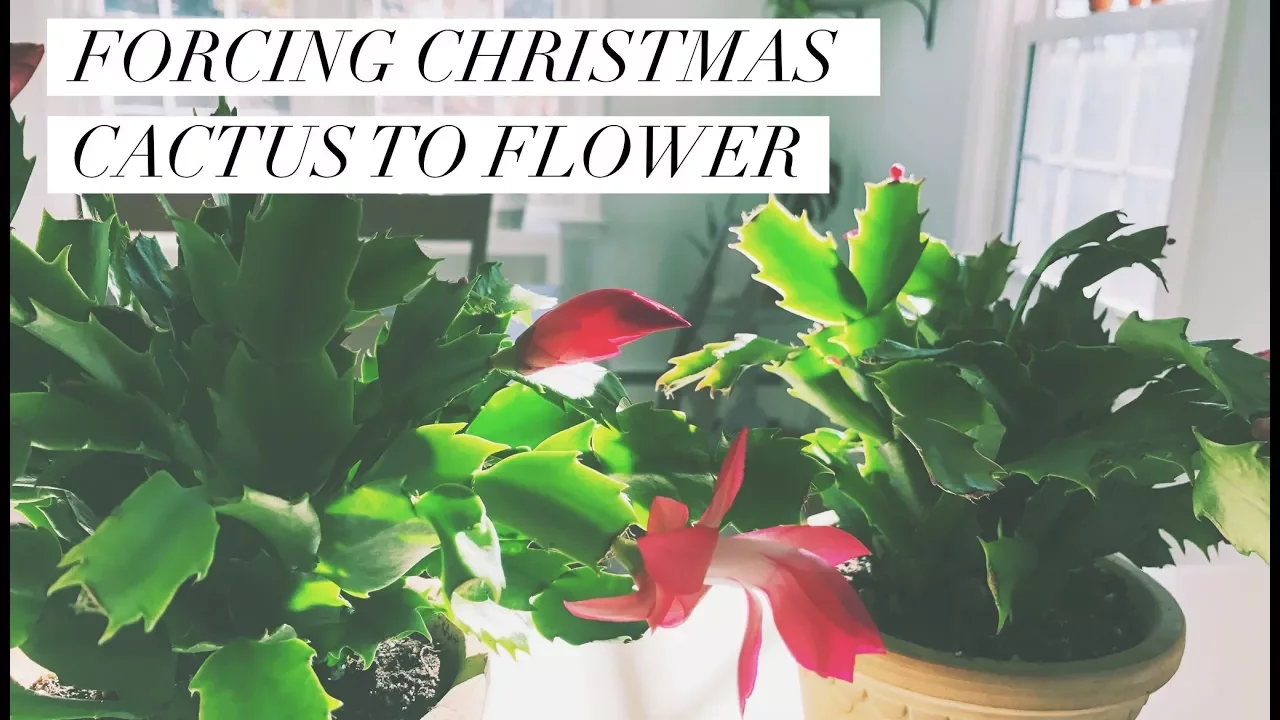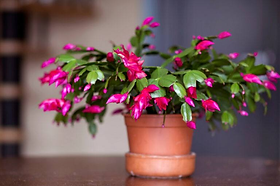It’s that time of year when you see beautiful Christmas cacti in bloom at big box stores, grocery stores, and nurseries. You have this yearning desire to buy one. Well go ahead! They make a beautiful addition to the holiday decor. But what if you already have one that is not blooming? There is no need to buy another. Unlike other seasonal plants, the Christmas cactus will delight you with beautiful blooms from year to year if you know how to treat them. Learn how to make your Christmas cactus bloom again, perhaps even in time for the holidays.
(Some of the links within this post are affiliate links on which I receive a small compensation from the sale of certain items with no extra cost to you.)
(As an Amazon Associate I earn from qualifying purchases.)
Dormancy in Plants
Just like when human biological clocks kick in in the evening when we begin to get fatigued and go to sleep, (a kind of dormancy), plants also have a clock that tells them when to “sleep”. This is a time when they prepare for new roots and blossoms to grow and thrive. The dormancy period is necessary for the cacti to develop buds. According to the Jobe’s Company, dormancy naturally happens to prepare the plant’s soft tissues for freezing temperatures, dry weather, or water and nutrient shortage. “Instead of exerting energy in an attempt to grow, they know to stop growing and conserve energy until mild weather returns.” Not surprisingly, dormancy naturally happens in autumn.
The trick to making a Christmas cactus bloom is to artificially induce a dormancy stage. Unlike humans though, plants’ dormancy periods last longer than an 8 hour sleep.
Three Factors That Create Dormancy in Plants
The three factors that trigger dormancy in Christmas cacti are light exposure, proper watering, and a correct air temperature.
The dormancy period should last for at least 8 full days and nights.
When Should You Put Christmas Cactus in the Darkness?
Less light will trigger dormancy in a Christmas cactus. If you live in an area where the days naturally get shorter leading up to the winter solstice in the northern hemisphere (opposite in the southern hemisphere), place the plant where it will receive about 16 hours of darkness and 8 hours of sunlight each day. A northern facing room that is less visited or a basement that has windows will work nicely. You want to make sure the plant is getting consistent darkness to trigger this period of growth and renewal. Even having a lamp on in the evening will disturb the dormancy cycle.

When to Subject the Cactus to a Colder Temperature
Cold temperatures stimulate blooming. An average temperature between 55 and 65 degrees Fahrenheit is crucial to producing flowers. Place your plant in a cold room and/or set your thermostat accordingly.
When to Stop Watering a Christmas Cactus
Limit the amount of water during this process. Wait until the entire pot dries out before giving it a small drink of water.
Tip: Limit the water while a Christmas cactus is budding. Too much water will cause the buds to fall off, especially when the buds are tiny. Water more when the buds are larger and almost in bloom.
Factors That Can Cause a Christmas Cactus to Not Bloom
So you’ve completed the dormancy process and your Christmas cactus is still not blooming. What now? Two things that can cause the cactus not to bloom are repotting at the wrong time or the soil in the pot is depleted of nutrients.
Repotting
Christmas cacti like to be “pot bound” meaning left in its pot for as long as possible before repotting it. When you do repot it though, only replant it in a slightly larger container with a drainage hole. Christmas cacti can go quite a few years before repotting.
Only repot the cactus in the early spring or after it has bloomed and the dead blossoms have fallen off.

Lacking Nutrients
If your cactus has not been repotted in a few years, the soil is probably depleted of most of its nutrients. Add a good 20-20-20 fertilizer, such as Jack’s Classic All Purpose Fertilizer from Amazon, a half strength water soluble fertilizer, to give it the boost it needs.
Timing is critical. Only add fertilizer once a month during the growing season, mainly early spring through late summer. Stop fertilizing at the end of August or else the blooms will suffer.
Some Interesting Facts About Christmas Cacti
1. Yes, Christmas cacti bloom around Christmas but they can be manipulated to bloom any time of year.
2. Christmas cacti are actually tropical plants and are native to the Brazilian rain forest. They are epiphytes and thrive in humid conditions.
3. It is a cactus but can thrive in cooler temperatures. Do not place a Christmas cactus by a heat vent, cool draft, or fireplace. Change in temperature can cause the buds to fall off.
4. Christmas cacti, when given the proper care, can live for 20 to 30 years.
5. Unlike Poinsettias and Amaryllis, a Christmas cactus is not toxic to cats or dogs.
For more information on how to care for a Christmas cactus, click here.
How to Make a Christmas Cactus Bloom-Conclusion
It is quite easy to make a Christmas cactus bloom if you provide it with these 3 important things, less sunlight, colder temperatures and less water.
I hope you enjoyed this post and will share it with friends and family. Please leave a comment below and let me know how you made out!
Happy Gardening,
Nina



